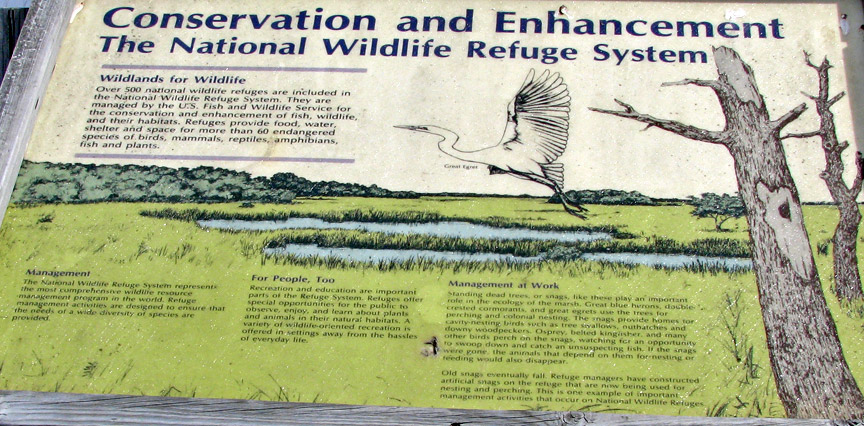![]()
Horicon Marsh

Horicon Marsh
Horicon Marsh is a marsh in Dodge County, Wisconsin. It is the site of both a national and state wildlife refuge. The extinct glacial lake is the largest freshwater cattail marsh in the United States.
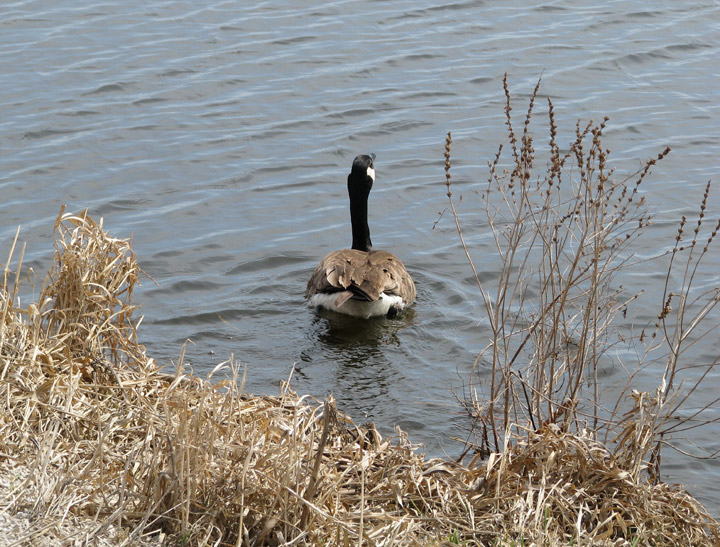
Canada Goose
looking over the marsh
Horicon Marsh was created by the Green Bay lobe of the Wisconsin glaciation during the Pleistocene era. The glacier, during its advance created many drumlins (a type of elongated hill) in the region, many of which have become the islands of Horicon Marsh. The marsh and surrounding Dodge County have the highest concentration of drumlins in the world.
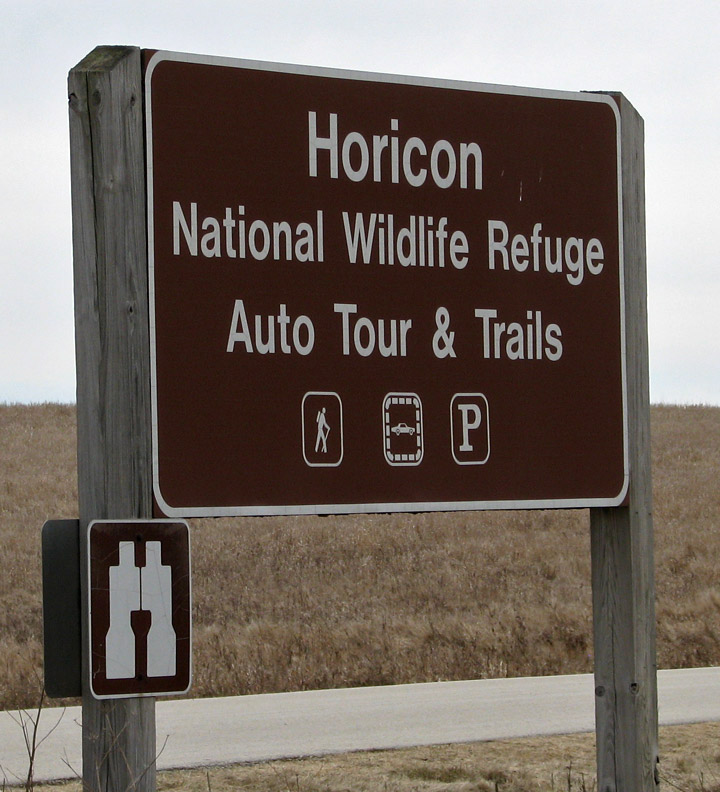
During the glacier's retreat, a moraine was created, forming a natural dam
holding back the waters from the melting glacier and forming Glacial Lake
Horicon. The Rock River slowly eroded the moraine, and the lake drained. As the
levels of silt, clay and peat accumulated in the former lake's basin, the
Horicon Marsh was formed.
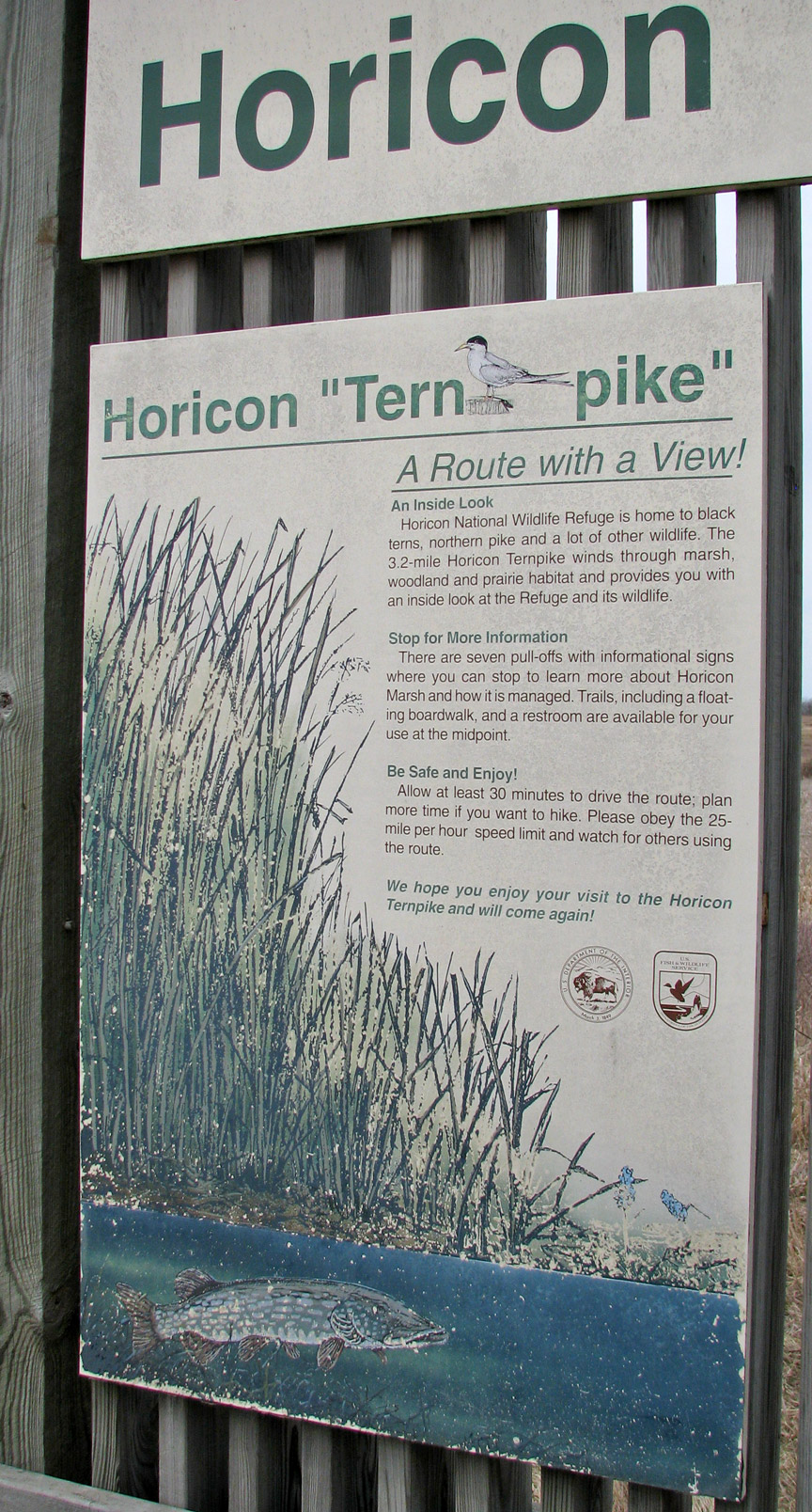
The Horicon Marsh State Wildlife Area is one of nine units of the Ice Age
National Scientific Reserve system, being considered to contain unique,
representative evidence of the Ice Age of the Pleistocene era.
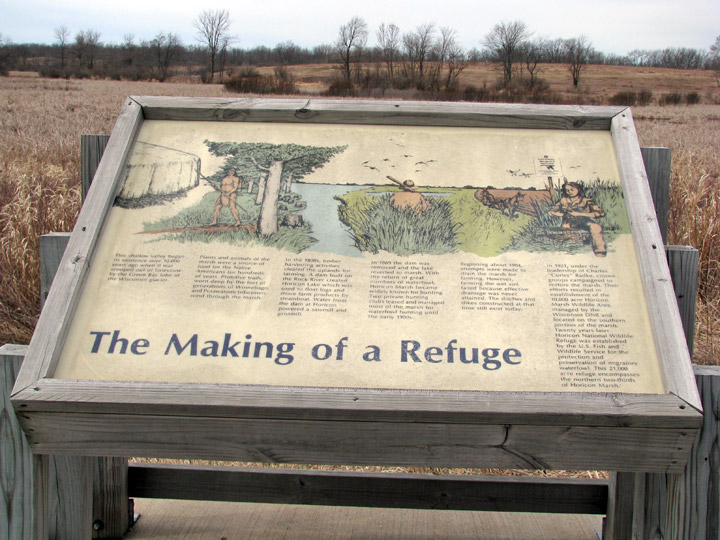
interpretative signs

The Horicon Marsh area has been inhabited by people, including the Paleo-Indians,
the Hopewellian people and the Mound Builders, since the ending of the last Ice
Age. Dozens of 1200 year old effigy mounds were built by the Mound builders in
the surrounding low ridges. Arrowheads have been found, dating to 12,000 years
ago. Later the region was inhabited by the Potawotomi, primarily to the east of
the marsh, and the Ho-Chunk to the west. Seven well-traveled Native American
foot trails met at the southern end of the marsh at the present location of
Horicon.
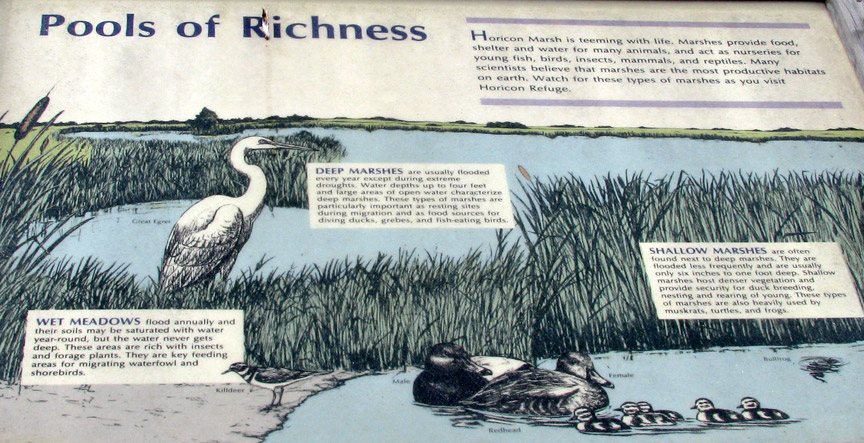
When Europeans first arrived in the area, they named the marsh "The Great Marsh
of the Winnebagos". The first permanent modern settlement along the marsh was
the town of Horicon. In 1846, a dam was built to power the town's first sawmill.
The dam held the water in the marsh, causing the water level to rise by nine
feet. The "marsh" was called Lake Horicon, and was, at the time, called the
largest man-made lake in the world (although it is unclear whether this was
literally true).
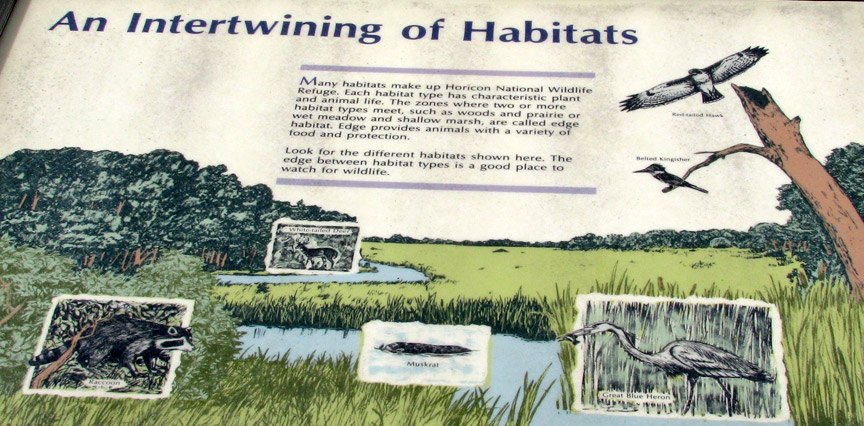
In 1869, the dam was torn down by order of the State Supreme Court, which ruled
in favor of landowners whose land was flooded. The area became a marsh once
more. Both birds and hunters flocked to the area, and the local duck population
was devastated. From 1910 to 1914, an attempt was made to drain the marsh and
convert it into farmland; these attempts failed, however, and afterwards the
land was widely considered to be useless.
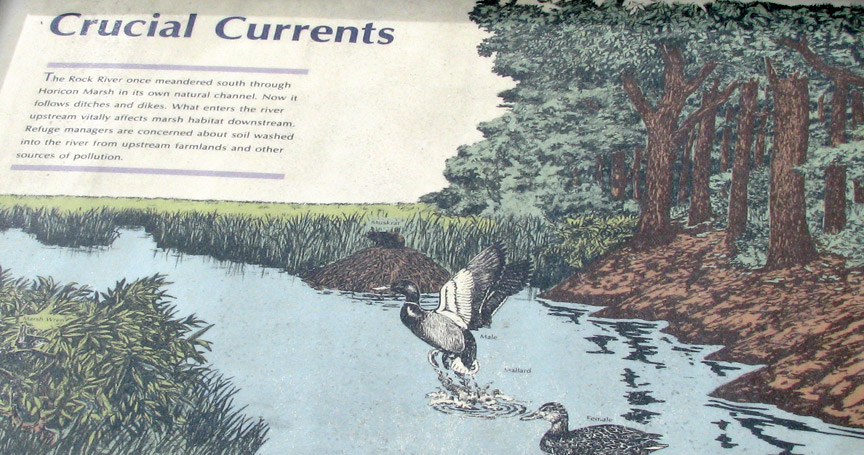
In 1927, the state legislature, after pressure from conservationists beginning
in 1921, passed the Horicon Marsh Wildlife Refuge Bill, providing for the
construction of a dam to raise the water to normal levels and for the
acquisition of the land by the government. During the 1940's, the United States
Fish and Wildlife Service bought the northern portions of the marsh.
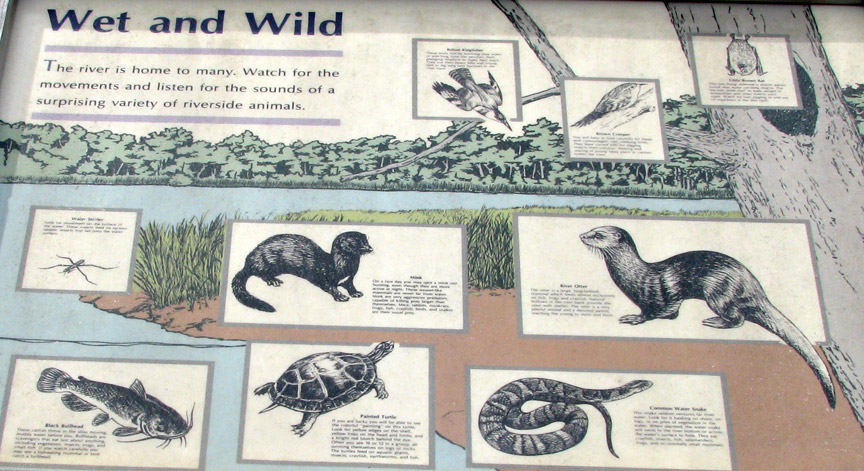
Presently, the marsh is 32,000 acres (130 kmē) in area, most of it open water
and cattail marsh. The southern third, approximately 11,000 acres (45 kmē),
forms the Horicon Marsh State Wildife Area (sometimes just Horicon Marsh
Wildlife Area or, locally, the "State Area") which was established as a nesting
area for waterfowl and resting area for migratory birds. Millions of waterfowl,
including over 200,000 Canada geese, migrate through the marsh. It is owned by
the state of Wisconsin and controlled by the Wisconsin Department of Natural
Resources (DNR).
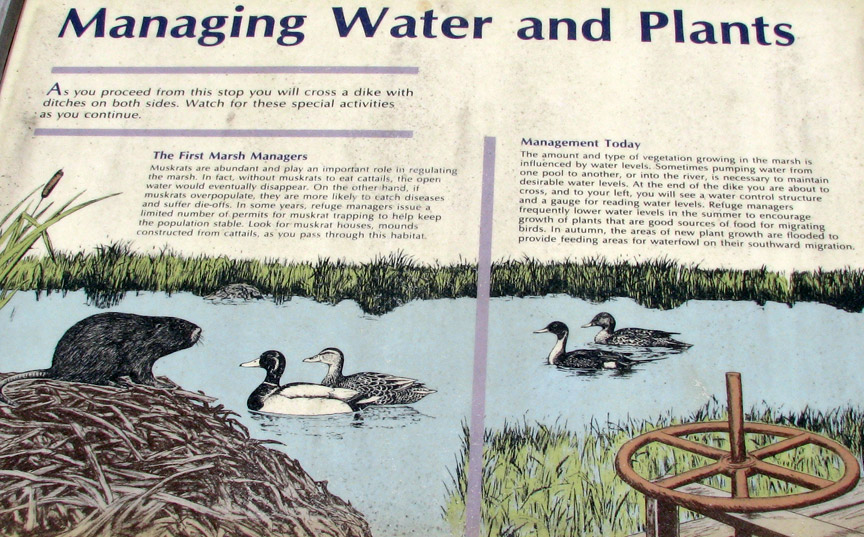
The northern two-thirds, approximately 21,000 acres (85 kmē), forms the Horicon
National Wildlife Refuge (locally called the "Federal Refuge"). Originally
created as a nesting area for the redhead duck, it is controlled by the Fish and
Wildlife Service.
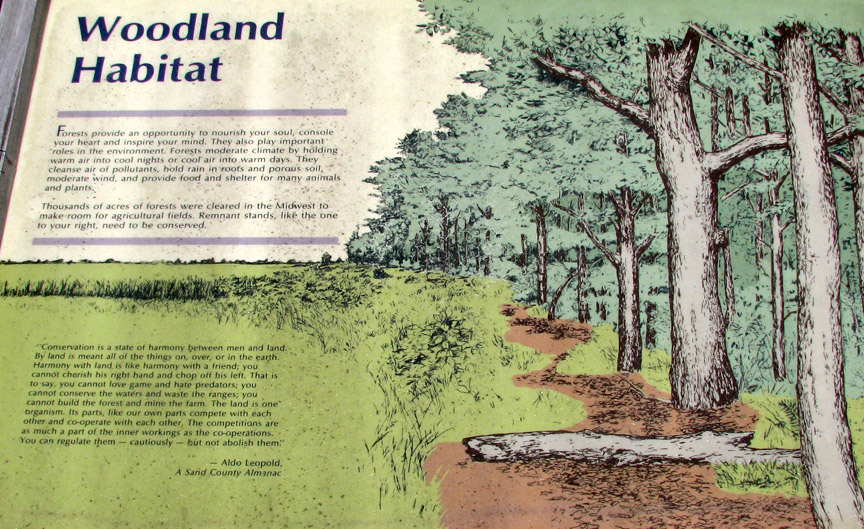
The refuges are known for their many species of birds, especially ducks, great
blue herons, and Canada geese (which have become increasingly common since the
1980's), as well as fish, frogs, snakes, turtles, mammals, insects and plants.
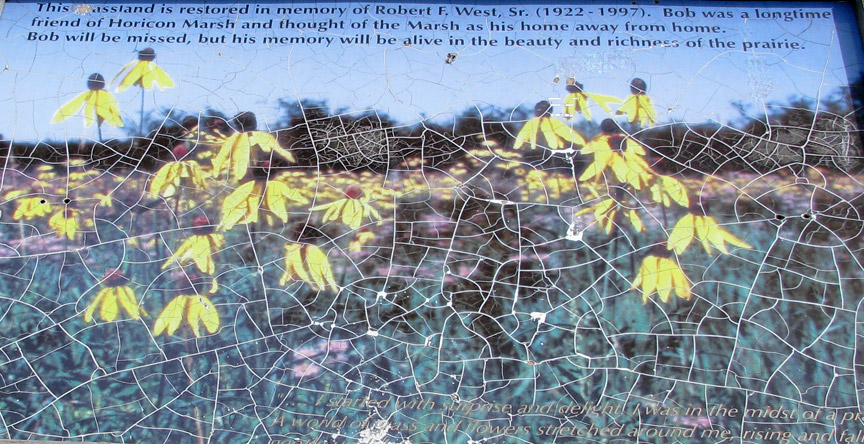
Horicon Marsh was designated a Ramsar site on December 04, 1990.
Text from Wikipedia

